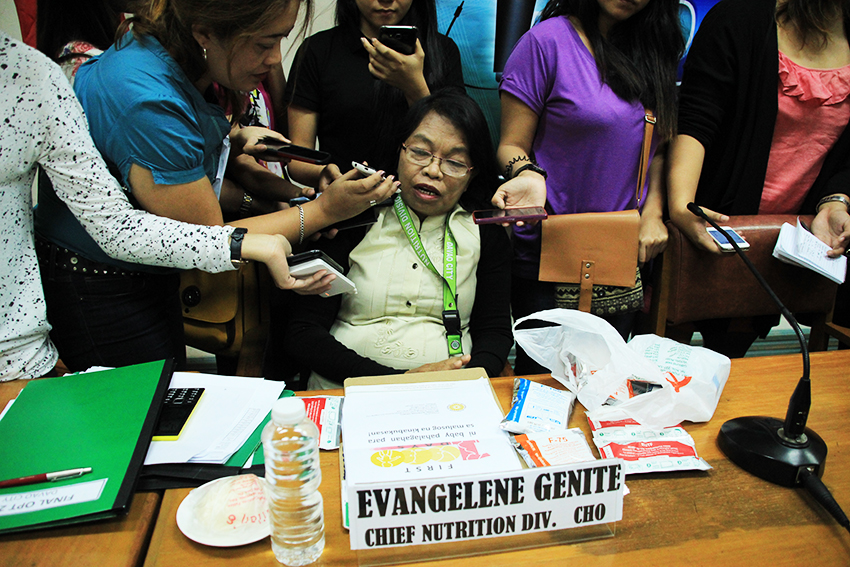
NUTRITION MONTH. City Health Nutrition Chief, Evangeline Genite announces the official start of the “First 1000 days ni Baby, Pahalagahan Para sa Malusog na Kinabukasan.” Genitez said under nutrition during the first 1,000 days, starting from conception to the second birthday of the child, results to health problems in the child’s later years. (Paulo C. Rizal/davaotoday.com)
By Janika Mia Tiempo, MSU Intern
DAVAO CITY — The City Health Office here posted a drop in severely acute malnutrition on the latest nutrition survey in the city.
Evangeline Genite, nutrition division chief of the CHO, said there is a 2.1 percent reduction of severely acute malnutrition in the city from 3.5 percent in 2013 to 1.4 percent this year.
She described the number as“very low”. Genite described severely acute malnourished children as very thin.
CHO recorded 372 children in the city who fall under the severely acute malnourished category. Eighty percent, or 307 of them were cured in the year 2014, Genite said.
The health office also recorded 15 percent or 57 individuals, called “defaulters”, who did not finish the treatment in 2014.
Genite said defaulters are those who showed only at the beginning of the program but were not able to finish treatment. She said many of those defaulters were Muslims and Badjaos who frequently transfer residence.
Based on their 2015 record, Genite said there were 124 severely acute malnourished children.
“Eighty nine percent or 110 of them were cured,” Genite said.
Meanwhile, there are 154 severely acute malnourished children this year, 75 percent of whom are already cured, the official said.
Genite said that poverty and unemployment of parent is a factor of malnutrition in children.
“As we have observed before, those families with a malnourished child are really very poor. The father has no permanent occupation. Especially in Paquibato and Marilog Districts the children are not eating the right kind and the right amount of food every day because of poverty,” Genite said.
Food medicine
Under its Community Management for Acute Malnutrition, the CHO treats malnutrition by giving children the so-called food medicine.
The CMAM program is a method of treating severely acute malnourished children (SAMC).
“We are the first city to implement this program in an emergency setting,” Genite said. The CMAM started in 2013 here.
Genite said they give ready to use therapeutic food or RUTF to children every day for three months.
RUTF is a food medicine in a sachet that contains creamy paste and tastes like peanut butter. It is not advised to place it in a container with the spoon and fork, but it should be fed directly to the mouth.
Depending on the child’s situation, the CHO may give a maximum of three sachets to the child.
Aside from the RUTF, the CHO also gives vitamins to children during their first week of visit. Children then undergo de-worming on the second visit.
Genite said they also counsel mothers on how to take good care of their children. (davaotoday.com)










